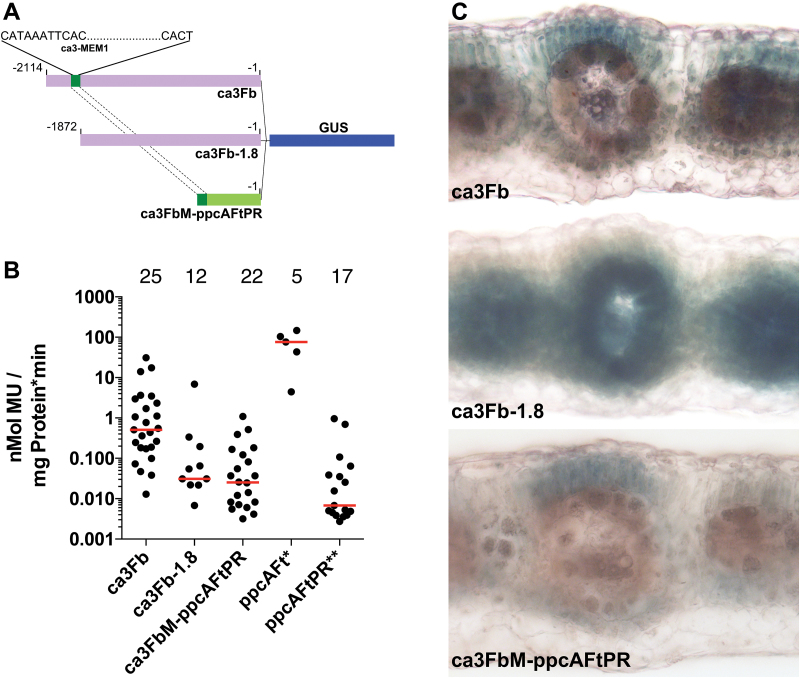Fig. 4.
Analysis of Flaveria bidentis promoter–reporter gene constructs. (A) Structures of the ca3–β-glucuronidase (GUS) chimerical genes: ca3Fb represents the 2114 bp region upstream of the ca3 translation start site, and includes the MEM1-like element; ca3Fb1.8 denotes the 1872 bp upstream of the ca3 translation start site; ca3FbM-ppcAFtPR designates the F. bidentis ca3 MEM1-like element fused to the proximal promoter region (PR) of the F. trinervia ppcA gene. (B) GUS activities in leaves of transgenic F. bidentis plants. Data for constructs ppcAFt (*) and ppcAFtPR (**) were taken from Gowik et al. (2004). Median values are indicated as red bars. Numbers above the values represent the number of individual plants assayed. Mu, 4-methylumbelliferone. (C) Histochemical localisation of GUS activity in leaf sections of transgenic F. bidentis plants transformed with the ca3Fb, ca3-1.8 and ca3Fb-ppcAFtPR constructs. Incubation times for GUS staining were 8 h (ca3Fb), 24 h (ca3Fb-1.8.) and 26 h (ca3FbM-ppcAFtPR).

